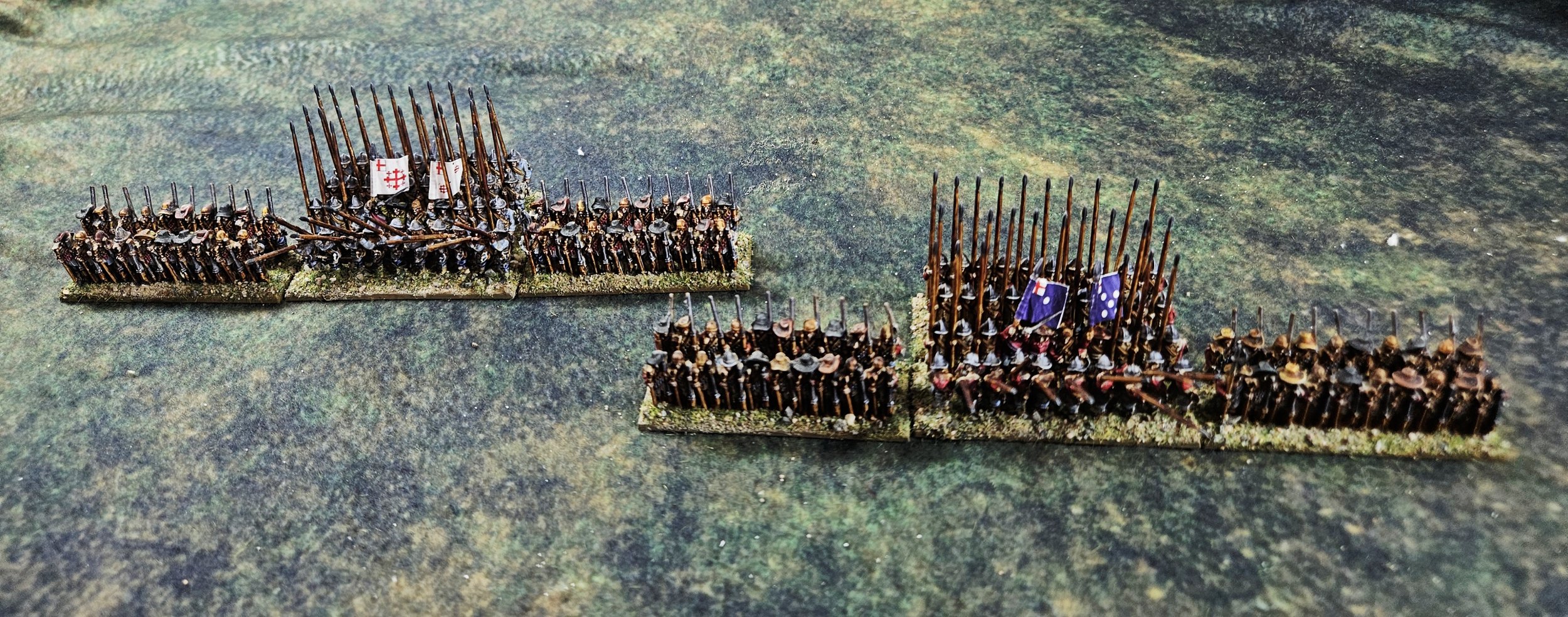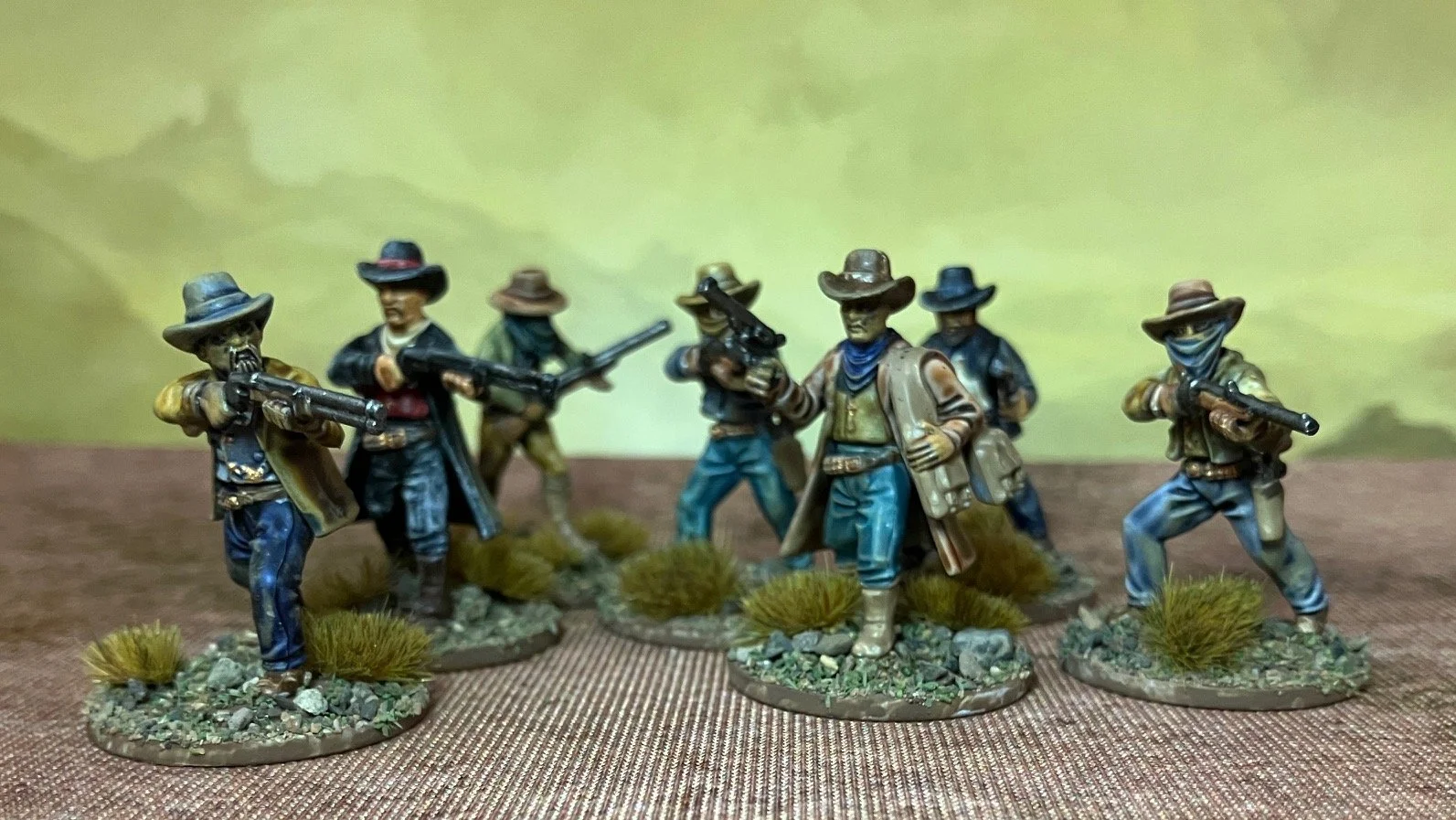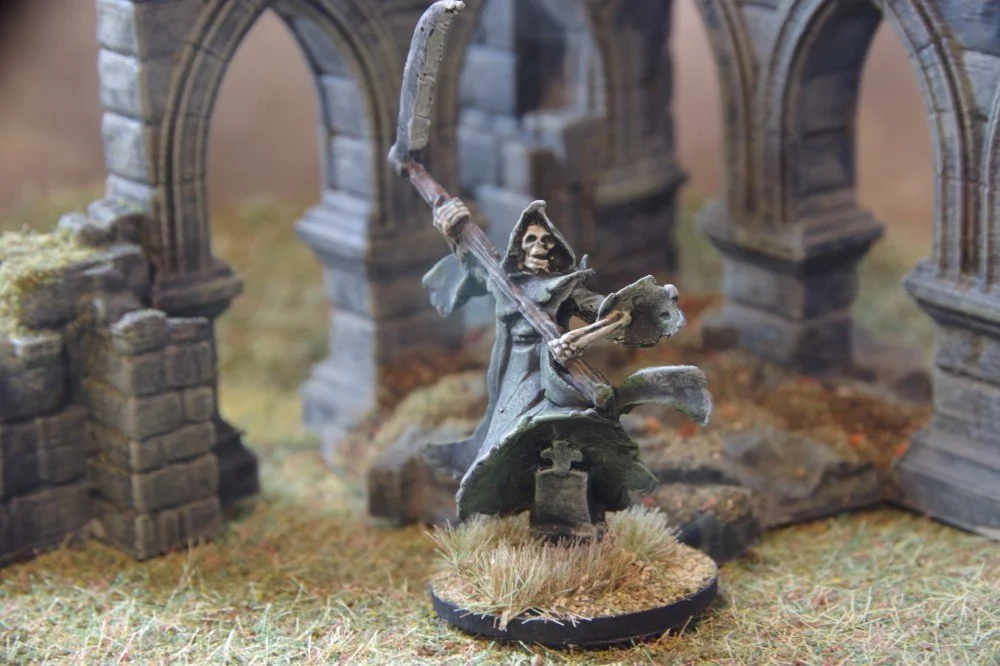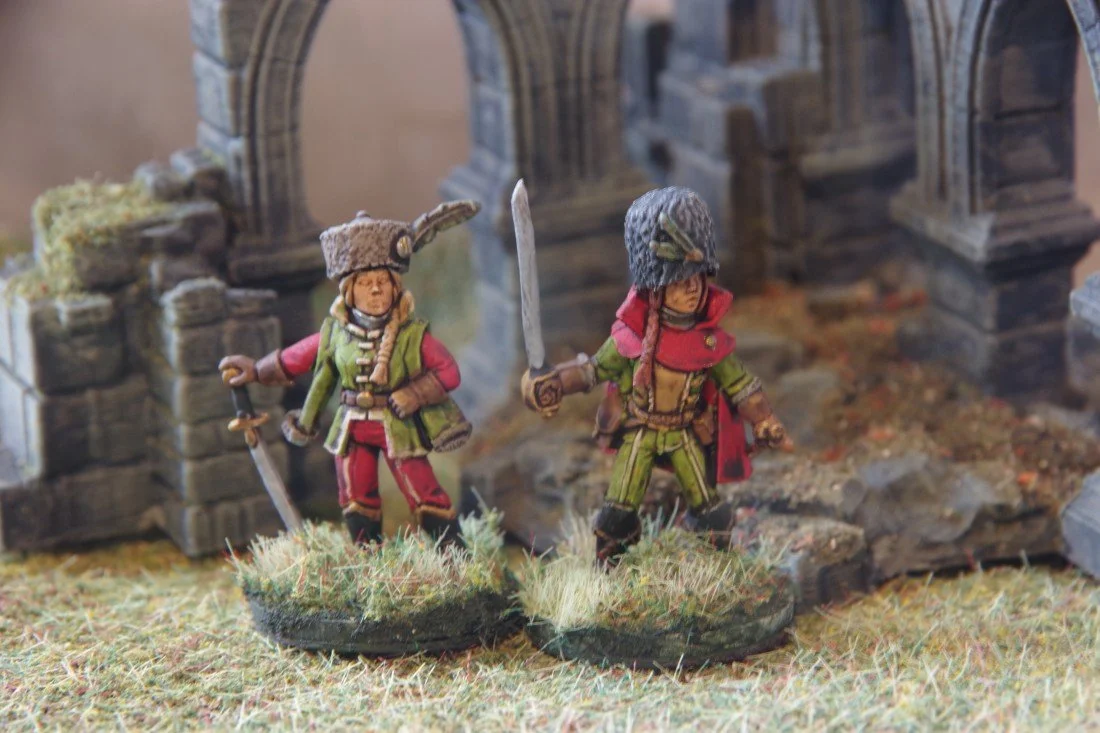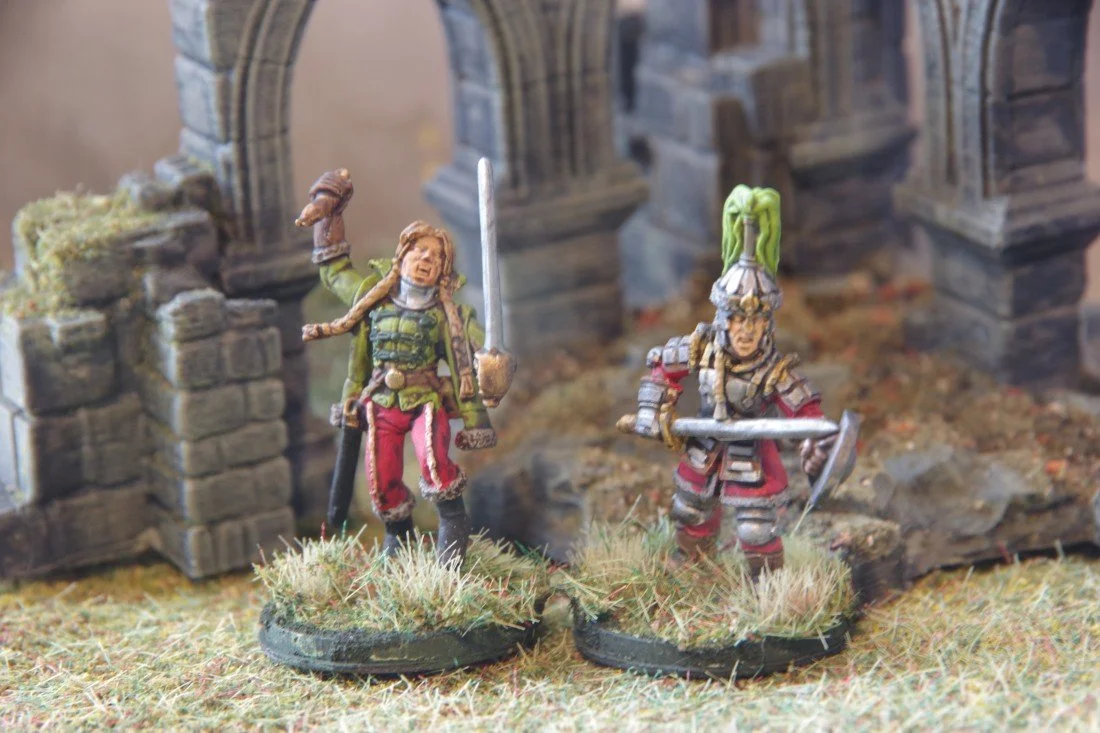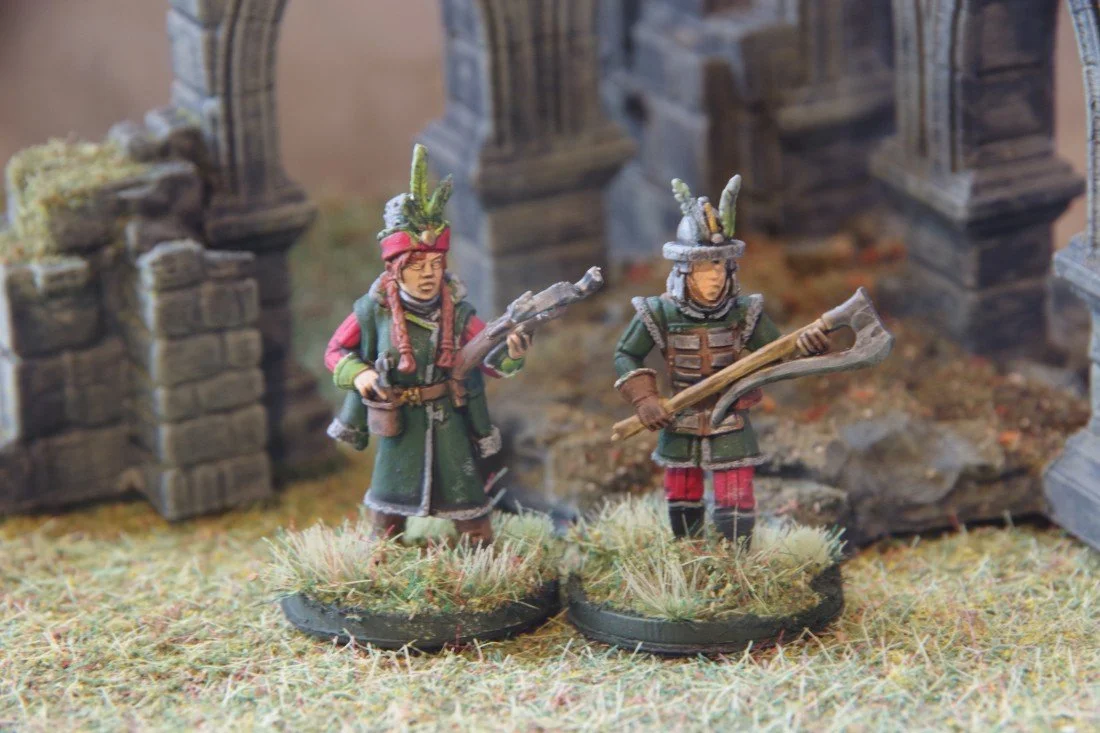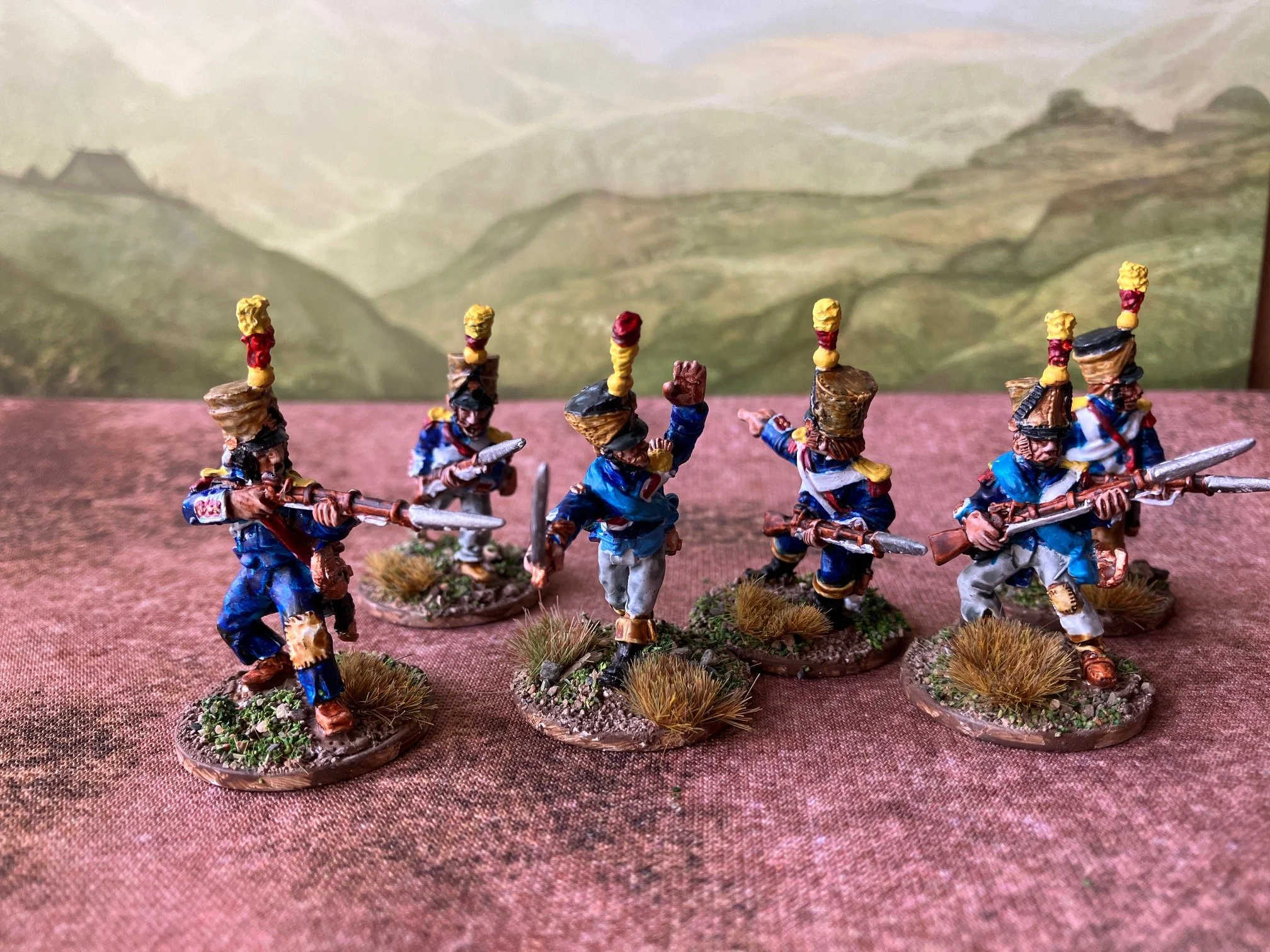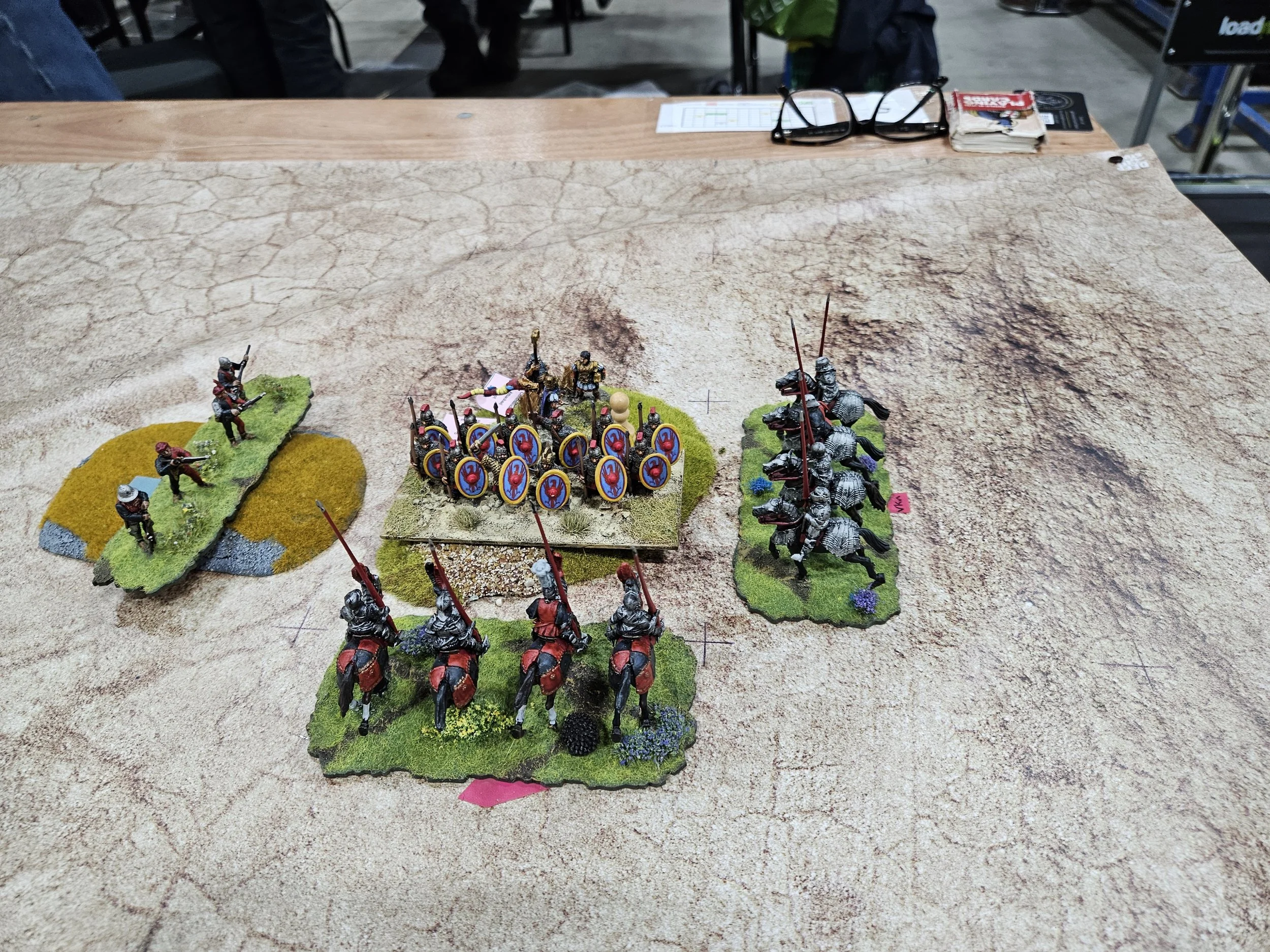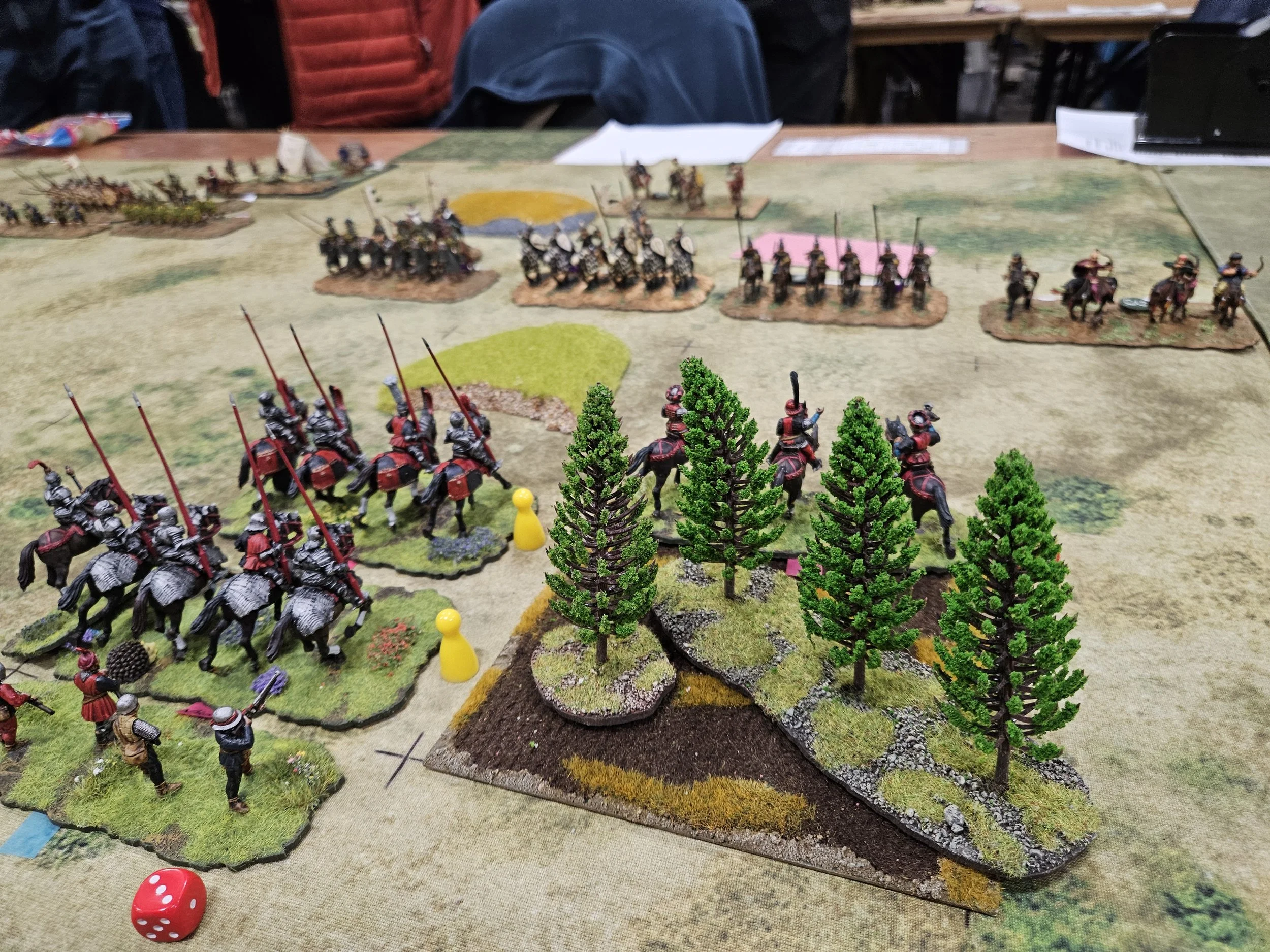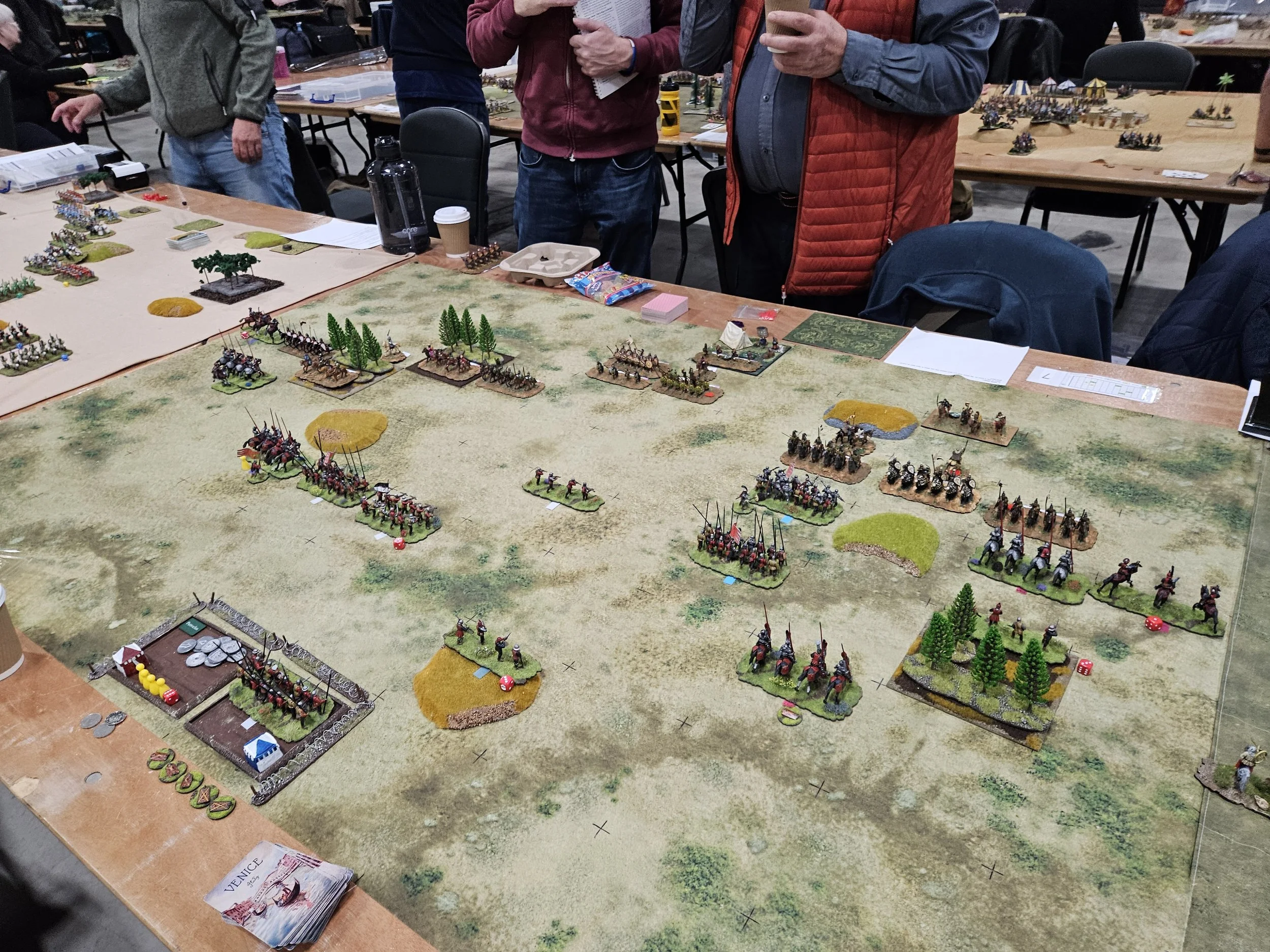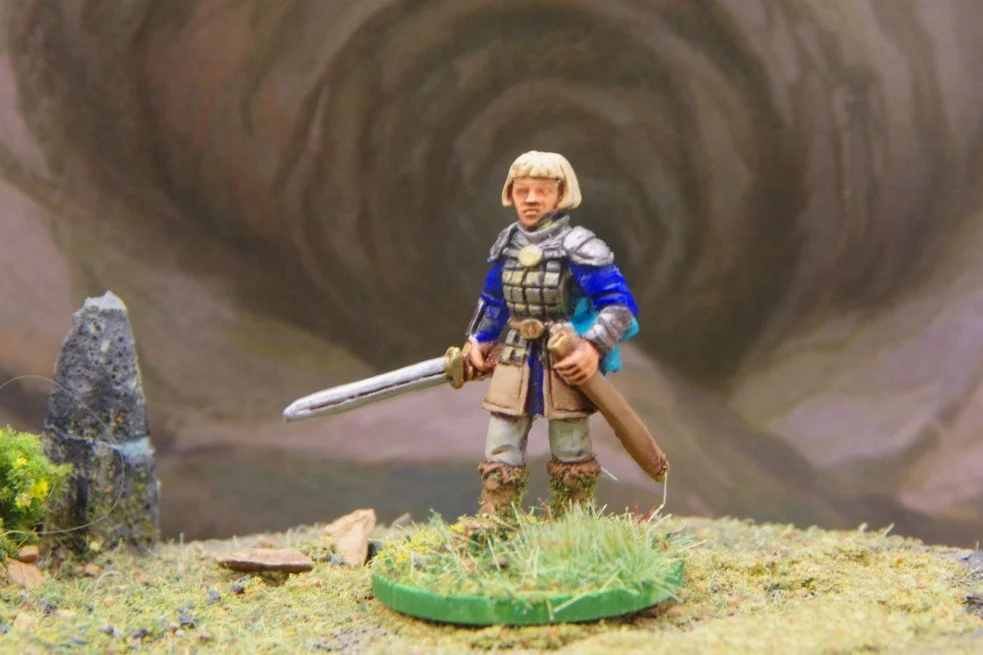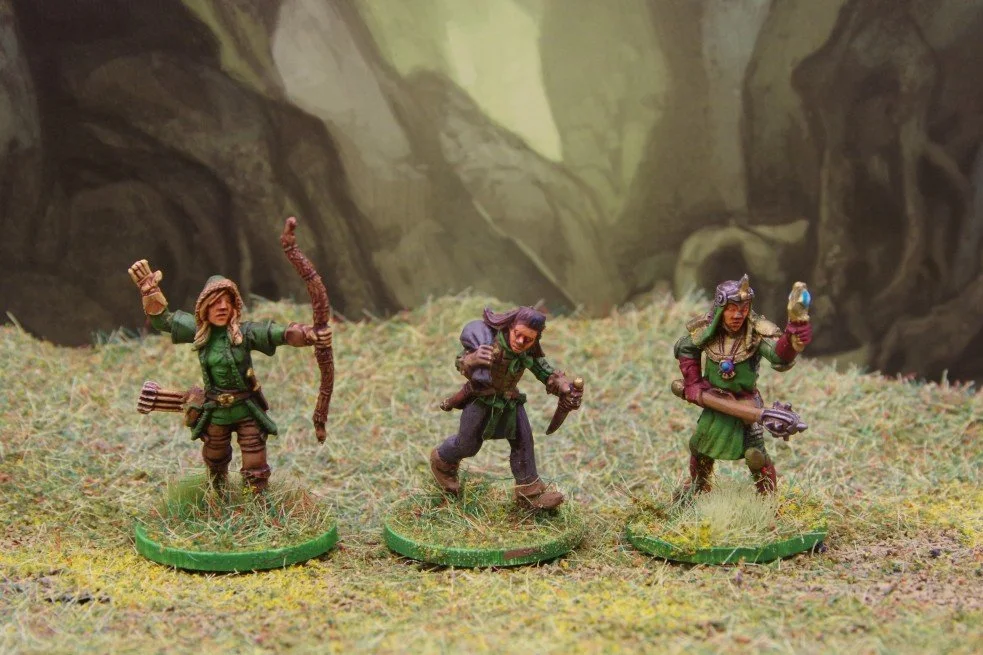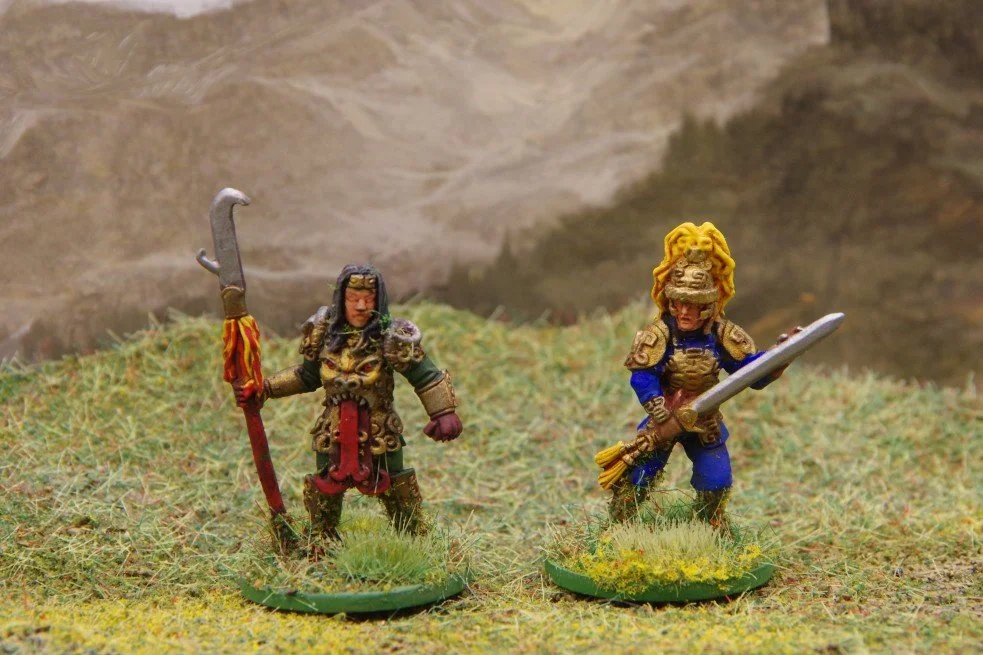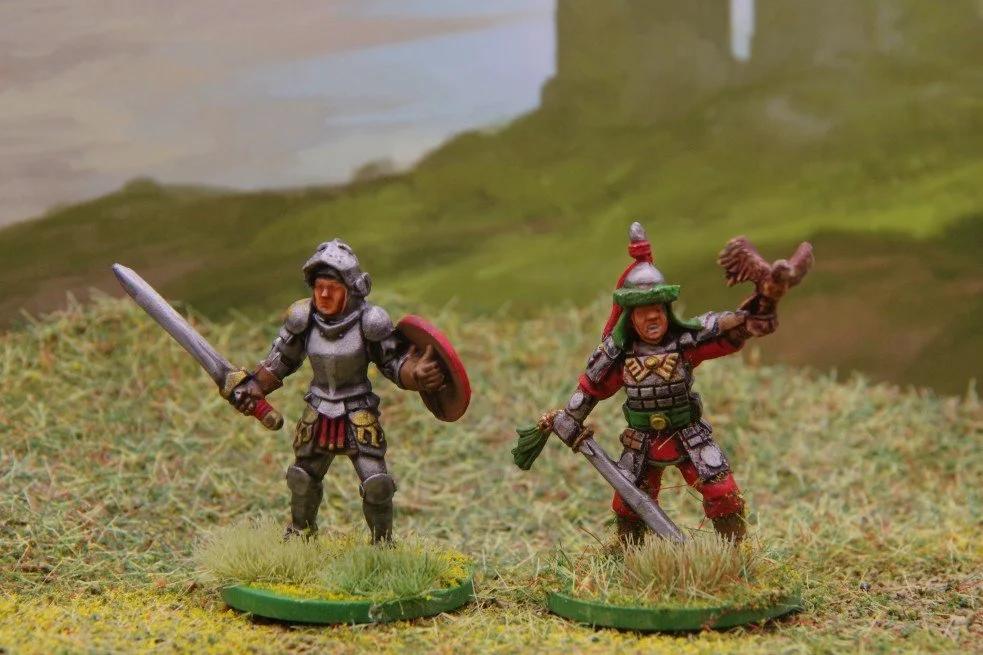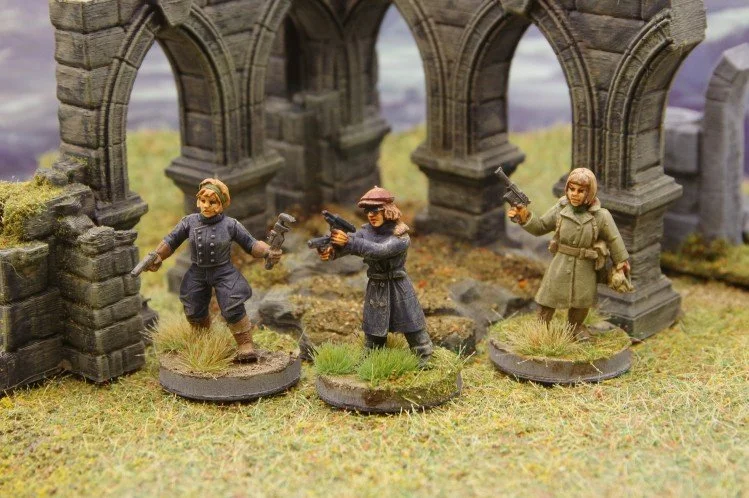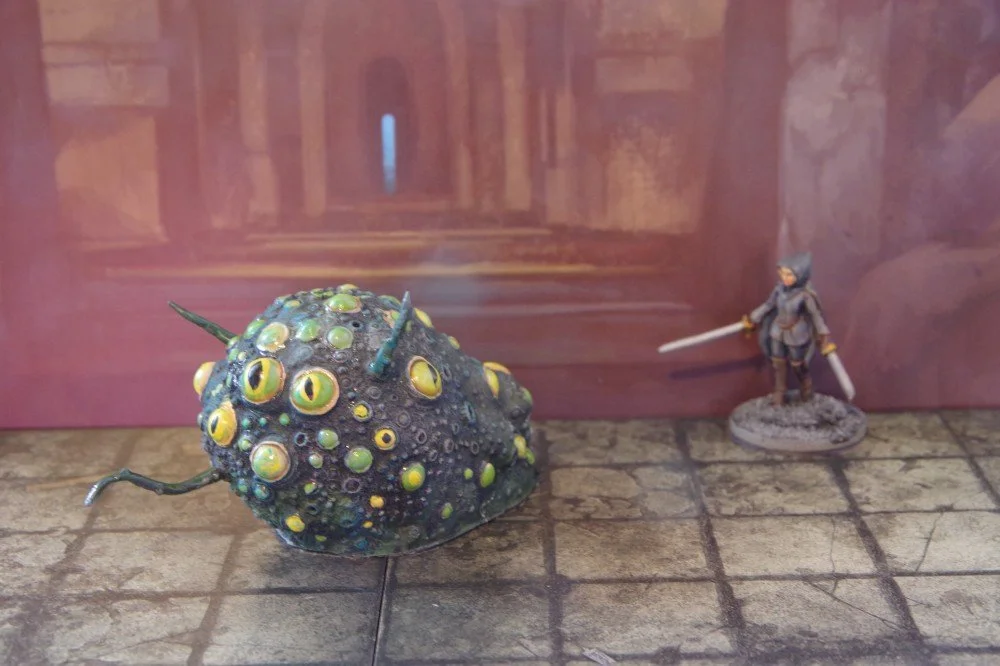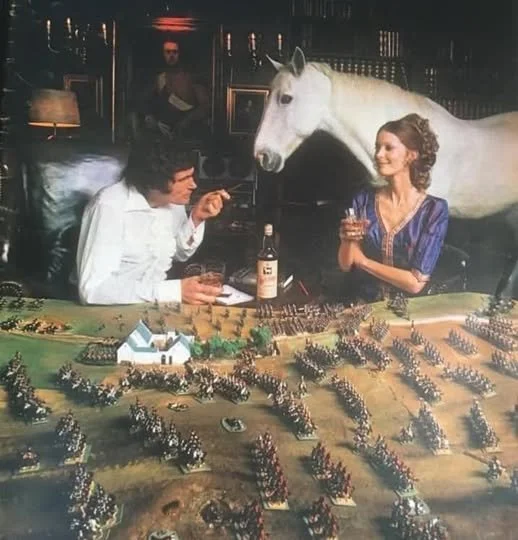TTS AAR: Venice Abroad versus Northern Dynasties Chinese
/Time for a pre-Christmas game of To The Strongest: my Venetians Abroad versus Peter’s Northern Dynasties Chinese.
The Venetians are not know for their scouting, so I was unsurprised when I lost that phase of the game. After deployment, the reltive postions were as follows:
Those of you who have played Peter in the past will know what is going to happen next!
Forced to deploy on a wide frontage to prevent myself being outflanked, Peter has concentrated his army against the left side of my army, meaning that all his force will effectively fight half of mine!
The game began with the Chinese advancing forward and putting their plan into action. The picture below shows exactly what this entails: you’ll see that they have managed to concentrate against my left wing and, with a bit of luck with the cards, even start to outflank me there.
I’ve played against Peter before, however, and so was expecting exactly these tactics. I therefore moved the Venetian (well, mercenary “broken lances”) to match the Chinese veteran heavy cavalry, and my mounted crossbowmen to block the outflanking force.
I now needed to get my right flank force across the table as soon as possible. With luck, I might even be able to hit the flank of the Chinese advance before it has time to deploy its extra numbers.
Unfortunately, the cards weren’t with me, and the right flank force spent two (yes, two!) turns refusing to follow orders!
The toher thing that needs to happen to defend against Peter’s favourite tactics is for the Knighst facing the main thrust to hold their ground as, if they go, the successful Chinese cavalry units will flood sideways into the flank of my main line.
On paper, the Knights should have been able to do exactly what was needed: one unit of veteran knights and one unit of later knights are not insignificant when it comes to melee! Again, unfortunately, the cards punished me for some imagined previous infraction, and the veteran knights were smashed from the table by the first Chinese charge, releasing hordes of enemy cavalry to swing sideways.
All was not lost, however.
The right hand knights finally got moving, and the infantry Alabardiers, with the aid of the handgunners, cut through some enemy lancers to dominate the centre of the field.
The Later Knights on the left were, however, now isolated and were unable to stand up to an assault by three Chinese heavy cavalry units supported by lights.
It was now a race to see whether the Chinese cavalry coming in from the left could kill enough of the Venetian infantry defending their camps before the Venetians in the centre (i.e. coming in from the right) could kill enough Chinese there to take the day.
Unfortunately, it was the Chinese who had the initiative and managed to win the game but, after a shaky start, the Venetians almost managed to snatch back victory: if their knights on the right hadn’t delayed getting across for two turns right at the beginning of the game, then things might have been very different.
But they didn’t…and things weren’t…but I was a lot closer to surviving Peter’s “weight one side” tactic than before!














